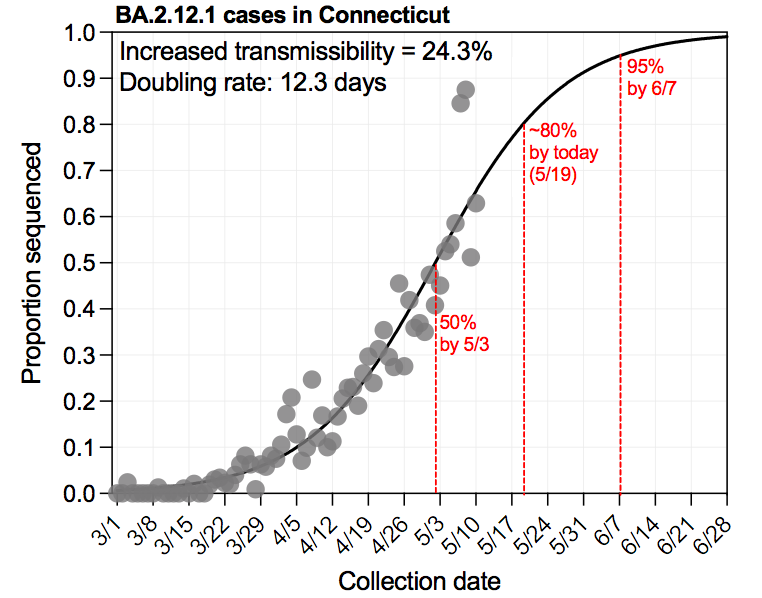🧬8/5 Connecticut #SARSCoV2 variant surveillance
@CovidCT | @jacksonlab | @CTDPH | @YaleSPH | @Yalemed
88% - Delta (B.1.617.2 + AY.3)
8% - B.1.621 (no greek letter yet)
3% - Gamma (P.1)
<1% - Alpha (B.1.1.7)
0% - everything else
short 🧵 | Report 👉
covidtrackerct.com/variant-survei…
@CovidCT | @jacksonlab | @CTDPH | @YaleSPH | @Yalemed
88% - Delta (B.1.617.2 + AY.3)
8% - B.1.621 (no greek letter yet)
3% - Gamma (P.1)
<1% - Alpha (B.1.1.7)
0% - everything else
short 🧵 | Report 👉
covidtrackerct.com/variant-survei…
Delta in Connecticut (~88%) is a bit behind the national average of 93%, but generally following the national trends. (2/9)
covid.cdc.gov/covid-data-tra…
covid.cdc.gov/covid-data-tra…

Besides Delta, the other major story here is B.1.621. It's now firmly the second most frequent variant in CT (~8%), and has so far been able to maintain its ground against the expansion of Delta. Something that Alpha, Gamma, and everything else couldn't do. (3/9) 

B.1.621 (first detected in Colombia) does not yet have a WHO greek letter, but IMO, its just a matter of time. It has several key spike mutations - E484K, N501Y, and P681H - and is now being found at high frequencies in other states. (4/9)
washingtonpost.com/health/2021/07…
washingtonpost.com/health/2021/07…
While we were able to fix our B.1.621 submission issue with GISAID, its still an issue for other groups. Almost certainly B.1.621 is under-reported in some regions in this CDC figure (not of the fault of the CDC). The GISAID issue means there there are still back-logs. (5/9) 

In CT, the reported cases are ~12/100K population/day, but Covidestim reports a much higher estimated infection rate at ~72/100K population/day. This is similar to our neighbors, but much lower than states in the south (e.g. FL = 335, LA = 552). (6/9) 

Link to covidestim to look at the numbers yourself (7/9)
covidestim.org
covidestim.org
Our variant-specific RT estimates show that most of the rise in cases is coming from Delta (Rt = 1.59) and B.1.621 (Rt = 1.34; shown as Non-VOC/VOI), with the rest not currently playing a critical role. (8/9) 

I'd like to once again thank my entire team. As cases rise, so does our work. Its a very tough time a year to be busy again, and we all just want a long break. But as always, they step up to keep the surveillance system running. I owe them lots of 🍻(9/9)
grubaughlab.com/team/
grubaughlab.com/team/
• • •
Missing some Tweet in this thread? You can try to
force a refresh















